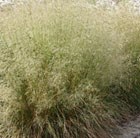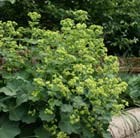New products at Crocus
by Sarah - May 14th, 2009.Filed under: Crocus, New Products.
New items today at Crocus

3-tier-oak-growhouse £139.99
A great growhouse made from FSC certified solid oak and black rust-resistant fittings. It has UV stabilised, twin-walled polycarbonate windows that allow maximum light in to the growhouse while insulating as well. There are also three adjustable/removable shelves so taller plants can be accommodated. Great for overwintering, hardening off, propagating and protecting plants from harsh weather.Measures: 110cm high x 76cm wide x 47cm deep

tufted hair grass £5.99
Position: full sun or partial shadeSoil: dry to moist, neutral to acid soilRate of growth: average to fast-growingFlowering period: June to AugustHardiness: fully hardyA mound-forming, evergreen grass thats particularly versatile, as it thrives in both sun and light shade. In summer, it shimmers like a golden cloud as its feathery inflorescences catch the light, and the flowers persist well into autumn. Spot plant it among perennials, in groups towards the front of a border, or in a wildflower meadow.Garden care: Remove the faded flowerheads in late winter before new growth appears.In warm areas the plant has a tendency to self-seed freely. Where thisis the case remove unwanted seedlings as part of routine bordermaintenance

ady's mantle £3.99
Position: full sun or partial shadeSoil: moist, humus-rich soilRate of Growth: fast-growingFlowering period: June to SeptemberHardiness: fully hardyNo garden should be without this beautiful and useful perennial. It has scalloped, bright green leaves which catch droplets of water that look like quicksilver and from June to September, it produces a frothy haze of tiny, chartreuse yellow flowers. Its ideal planted en-masse for groundcover or edging paths, it tolerates a range of adverse conditions including heavy clay and, once established, is drought tolerant. Alchemilla mollis takes its name comes from the Arabic, meaning little magical one, due both to its reputation for having healing properties and because its leaves catch the morning dew. In the Middle Ages, the water collected from alchemilla leaves was believed to have magical properties.Garden care: Cut back the faded flower heads and foliage in August and the plant will often produce a second flush of flowers. Alchemilla has a tendency to self-seedfreely, so to minimise the spread of the plant remove the seedheads carefully after flowering.






